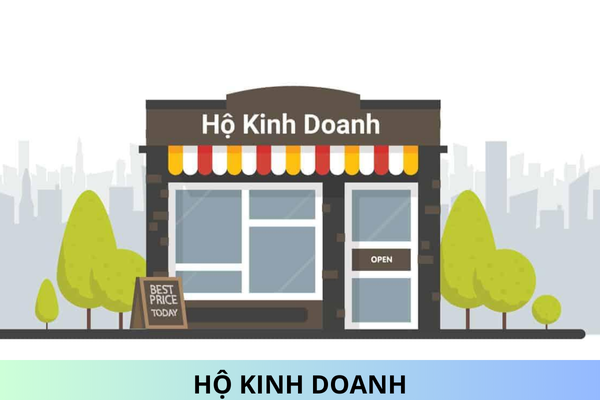Instructions on VAT declaration for branches in Vietnam
What are procedures for VAT declaration for branches in Vietnam? Which document stipulates this issue? I am currently studying accounting, so I need to understand this information. I hope to receive answers from Lawnet as soon as possible. Thank you very much.
Nguyen Thi Thanh Thanh (thanh.nguyen***@gmail.com)

Instructions on VAT declaration for branches in Vietnam - image from internet
Legal basis: Article 11 of the Circular 156/2013/TT-BTC
- For branches that keep accounting records independently in Vietnam: Make declaration at that branch.
- For branches that does not keep accounting records independently in Vietnam:
a. Where the taxpayer has an affiliate in the same province as the taxpayer’s headquarter, the taxpayer shall file a joint VAT declaration.
If the affiliate has a seal, deposit account, directly sells goods or services, declares sufficient input and output VAT, and wishes to declare tax separately, it must apply for permission to declare tax separately and use separate invoices.
Directors of local Departments of Taxation shall decide the place where providers of restaurant, hotel, massage, and karaoke services declare their tax.
b. Where the taxpayer has an affiliate in another province than the taxpayer’s headquarter, the affiliate shall directly submit the VAT declaration to the supervisory tax authority.
+ If the affiliate does not sell anything and thus does not earn any revenue, tax shall be declared at the taxpayer’s headquarter.
Where the taxpayer plans to sell real estate, the taxpayer must apply for tax registration and use credit-invoice method to pay the tax on real estate trading to the tax authority of the locality where real estate is sold.
Example: Real estate company A has a headquarter in Hanoi, and is the investor in a housing project in Da Nang city. When establishing a branch in Da Nang city to supervise the project, company A must apply for tax registration and pay tax using credit-invoice method in Da Nang city.
When the affiliates of a farming, forestry or fishery company that have registered and paid VAT using credit-invoice method buy farming, forestry or fishery products, then transfer or sell them to the headquarter, internal delivery notes shall be used instead of VAT invoices.
+ Where a taxpayer that declares and pays tax using credit-invoice method has a manufacturing division (processing, assembling facility) situated in another province than that of the headquarter that does not directly sell goods and thus does not earn any revenue
If the affiliated manufacturing division keeps accounting records, tax shall be registered and paid using credit-invoice method in the same locality, and VAT invoices shall be used when semi-finished products or finished products are transferred, including those transferred to the headquarter.
If the manufacturing division does not keep accounting records, the taxpayer shall declare tax at the headquarter and pay tax in the locality where the manufacturing division is situated. The VAT is 2% (if the goods incur 10% VAT) or 1% (if the goods incur 5% VAT) of the revenue at VAT-exclusive prices of sold products. The revenue of sold products is determined according to the prices of the same kind of products in the locality where the manufacturing division is situated.
Where the total VAT payable in the localities where the taxpayer’s manufacturing divisions are situated is greater than the amount of VAT payable by the taxpayer at the headquarter, the taxpayer shall distribute the amount of tax payable among the manufacturing divisions as follows: VAT payable at the locality where the manufacturing division is situated equals (=) VAT payable by the taxpayer at the headquarter multiplied by (x) the ratio of revenue at VAT-exclusive prices of the products created by the manufacturing division (or products of the same kind in the same locality) to the total revenue at VAT-exclusive prices of the products created by the whole company. If the taxpayer does not incur any tax at the headquarter, then the taxpayer does not have to pay tax at the localities of their manufacturing divisions.
The taxpayer shall make and send a “VAT distribution table” (form No. 01-6/GTGT) together with the tax declaration to the supervisory tax authority, and a copy of form 01-6/GTGT to the supervisory tax authorities of the manufacturing divisions.
According to the amount of VAT paid in the locality where the taxpayer’s headquarter is situated and the localities where manufacturing divisions are situated in the distribution table form 01-6/GTGT, the taxpayer shall make a notice of VAT payment in the locality where the headquarter is situated and in every locality where the manufacturing divisions are situated. The notice must specify that tax is paid to an account of a State Treasury at the same level as the tax authority
Example 1: Company A has its headquarter in Hanoi and 02 affiliated factories that do not keep accounting records and are situated in Hai Phong and Hung Yen. The products manufactured incur 10% VAT and are sold by the headquarter.
In August 2014: revenue at VAT-exclusive prices of the products manufactured by the factory in Hai Phong is 500 million VND, in Hung Yen is 600 million VND. The amount of VAT paid in the locality where the headquarter is situated (according to form 01/GTGT) in the period is 25 million VND.
The amount of VAT paid by company A in Hai Phong:
500 million VND x 2% = 10 million VND.
The amount of VAT paid by company A in Hung Yen:
600 million VND x 2% = 12 million VND.
The amount of VAT paid by company A in Hanoi:
25 million VND - 10 million VND - 12 million VND = 3 million VND.
Example 2: Company A has its headquarter in Hanoi and 03 affiliated factories that do not keep accounting records and are situated in Hanoi, Hai Phong and Hung Yen. The products manufactured are sold by the headquarter.
In September 2014: revenue at VAT-exclusive prices of the products manufactured by the factory in Hai Phong is 500 million VND, in Hung Yen is 600 million VND, in Hanoi is 200 million VND.
The amount of VAT paid in the locality where the headquarter is situated (according to form 01/GTGT) in the period is 20 million VND.
The amount of VAT paid by company A in Hai Phong and Hung Yen according to 2% rule (the goods incur 10% tax): 500 million VND x 2% + 600 million VND x 2% = 22 million VND. By this rule, the amount of VAT paid in the localities where the factories are situated is greater than that paid by the headquarter. Therefore, company shall distribute VAT as follows:
The amount of VAT paid by company A in Hai Phong:
20 million VND x 500 million VND / (500 million VND + 600 million VND + 200 million VND) = 7.69 million VND.
The amount of VAT paid by company A in Hung Yen:
20 million VND x 600 million VND / (500 million VND + 600 million VND + 200 million VND) = 9.23 million VND.
The amount of VAT paid by company A in Hanoi:
20 million VND - 7.69 million VND - 9.23 million VND = 3.08 million VND.
Example 3: Company A has its headquarter in Hanoi and 02 affiliated factories that do not keep accounting records and are situated in Hai Phong and Hung Yen. The products manufactured are sold by the headquarter.
In October 2014: revenue at VAT-exclusive prices of the products manufactured by the factory in Hai Phong is 400 million VND, in Hung Yen is 500 million VND. In October 2014, company A’s headquarter does not incur any tax. Company A also does not have to pay VAT in Hai Phong and Hung Yen.
Best regards!










